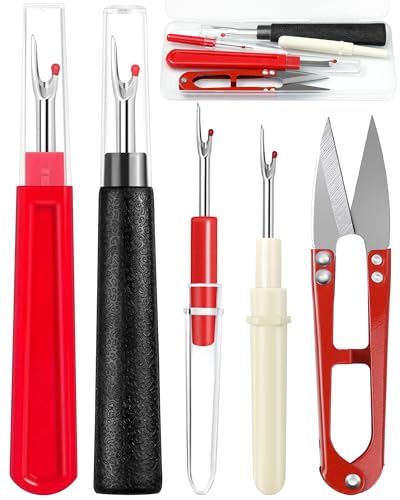There’s nothing quite like a cozy quilt to bring warmth and comfort to your home. However, over time, even the most cherished quilts can show signs of wear, especially around the edges. A frayed quilt edge not only looks unappealing but can also lead to further damage if left unattended.
Understanding Frayed Quilt Edges
Frayed quilt edges signal wear and tear that can diminish the quilt’s aesthetic and structural integrity. Common causes of fraying include frequent washing, exposure to rough surfaces, and aging fabric. If left untreated, fraying leads to further unraveling, compromising the quilt’s functionality.
Recognizing various types of frayed edges can aid in effective repairs. Edges may show slight fraying, where only the threads begin to separate, or significant fraying, where chunks of fabric come loose. Identifying the severity of the fray allows for tailored repair methods.
Preventing frayed edges is crucial. Regular checks on the edges during cleaning maintain the quilt’s condition. Washing quilts in cold water and using gentle detergent minimizes fabric stress. Additionally, storing quilts in a dry, cool place helps prolong their life.
Repair methods vary based on the quilt’s material and the extent of the fraying. For small frays, I often recommend using a simple hand stitch to secure loose threads. In cases of more substantial damage, incorporating new fabric or a patch may be necessary. This approach not only repairs but can enhance the quilt’s visual appeal.
By understanding the nature of frayed quilt edges, I can take proactive steps to ensure the longevity and beauty of my quilts.
Gathering Your Materials
Gathering your materials is crucial for a successful quilt edge repair. The right tools and fabrics streamline the process, making the repair both effective and efficient.
Essential Tools
- Scissors: Use sharp fabric scissors to cut accurately. They help prevent further fraying.
- Seam Ripper: This tool removes damaged stitching with precision. It’s essential for accessing frayed edges.
- Needles: Select hand-sewing needles appropriate for your quilt fabric. They accommodate different thicknesses.
- Thread: Choose thread that matches your quilt’s fabric. Polyester thread offers durability, while cotton thread works well for natural fabrics.
- Pins or Clips: Secure fabric layers in place before stitching. This keeps everything aligned during the repair process.
- Measuring Tape: Accurate measurements ensure a consistent repair, especially if cutting away frayed areas.
- Iron: A hot iron smooths out wrinkles, making it easier to work with fabric. Use it before starting your repair work.
Fabric Options for Repair
- Cotton: This fabric type blends well with most quilts. It’s easy to sew and offers good durability.
- Canvas: A heavier option that adds strength. Suitable for quilts exposed to more wear.
- Batting: If the edge is noticeably thin, adding extra batting can provide structure. Use basting spray to attach it.
- Bias Tape: This pre-made strip works well for finishing edges. It’s available in various colors to match your quilt.
- Felt: A good option for colorful patches, felt requires no hemming. It adds both visual interest and extra durability.
- Denim: Repurposed denim adds toughness. Use it for a creative patch that stands out.
Collecting these materials equips you to tackle the repair process and extends the life of your cherished quilt.
Step-by-Step Repair Process
Repairing a frayed quilt edge requires careful preparation and precise stitching. Below are the steps I follow to ensure a successful repair.
Preparing the Quilt
- Inspect the Damage: Examine the frayed edge closely to determine the extent of the wear. Identify loose threads and any areas needing more attention.
- Trim Excess Threads: Use sharp fabric scissors to snip away any frayed threads and uneven edges. This creates a clean surface for the repair.
- Lay the Quilt Flat: Place the quilt on a flat, clean surface. Smooth out wrinkles to ensure an even repair area. Use pins or clips to secure any areas that may shift during the sewing process.
- Cut a Patch: Depending on the quilt’s fabric, cut a patch from an appropriate material. Ensure the patch is slightly larger than the damaged area to allow for secure stitching. Cotton or denim works well for most repairs.
Stitching the Edge
- Align the Patch: Position the patch over the frayed area, centering it as best as possible. Ensure the good side of the fabric faces up.
- Pin in Place: Secure the patch with pins or clips to prevent it from moving as you sew.
- Choose the Stitch Type: Select a suitable stitch for the repair. A straight stitch works well for most patches, while a zigzag stitch offers extra durability against fraying.
- Sew the Patch: Starting at one end, sew along the edge of the patch, maintaining an even distance from the edge. Backstitch at the beginning and end for added strength.
- Press the Seam: Once finished, press the patch with an iron on a low heat setting. This helps set the stitches and smooths the sewn area for a neat appearance.
- Final Check: Inspect the repaired section for any loose threads or gaps. Trim any excess fabric and secure any loose threads as needed.
Following these steps ensures a durable and attractive repair, prolonging the life of your beloved quilt.
Tips for Maintaining Quilt Integrity
Maintaining the integrity of a quilt ensures its longevity and continued beauty. Simple practices can significantly enhance a quilt’s lifespan and resist wear.
Regular Inspections
Regular inspections catch potential issues before they worsen. I recommend examining your quilt every few months. Look for fraying edges, loose threads, or signs of wear. If you spot any discrepancies, address them promptly; minor repairs can prevent major damage. Additionally, check for any discoloration, especially after washing. This helps maintain not only the quilt’s functionality but also its aesthetic appeal.
Proper Storage Techniques
Proper storage techniques protect quilts during periods of non-use. I always choose a cool, dry location to store my quilts. It’s best to fold them neatly, avoiding tight rolls or creases that could cause fabric stress. Using breathable cotton storage bags can shield quilts from dust and moisture. I steer clear of plastic containers; they trap moisture and promote mold growth. Adding lavender sachets can deter pests while providing a pleasant scent. Taking these steps keeps my quilts in excellent condition for years.
Conclusion
Taking the time to repair a frayed quilt edge can really breathe new life into a beloved piece of fabric art. It’s amazing how a little effort can restore not just the quilt’s appearance but also its functionality. I’ve found that regular maintenance makes all the difference in keeping my quilts looking their best.

By addressing fraying early and using the right materials and techniques, I can ensure my quilts remain cozy companions for years to come. Remember to keep an eye on your quilts and treat them with care. With a bit of love and attention, they’ll continue to provide warmth and comfort for many seasons ahead. Happy quilting!












